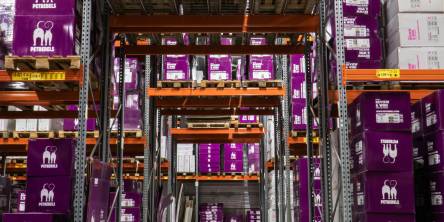UFT Test Automation Frameworks: What You Need to Know

As the importance of software continues to grow, there are several factors whose influence have grown right along with it. And out of all of them, test automation frameworks have garnered their fair share of attention from the market. Why is that? It is because these frameworks serve as an implementation guideline for automation testing. Among other things, it enables the team to reuse code in different scenarios, put together a testing script in a standard format, etc. As a result, it can empower automation testing teams to deal with challenges without much of a fuss.
Also referred to as micro focus unified functional testing, certain parameters must be met when it comes to automation frameworks. Listed below are some of the most crucial requirements for a standard automation framework.
- Parameterization of data
- Code must be compulsorily comprehensible, easily maintained, and reusable for varying sets of data
- Test data must not be mixed with the code
- Results achieved from the test must be recorded in individual log files and in an easy to comprehend format
- Processes for taking care of errors in an appropriate manner should also be a part of the framework
- The framework must ensure continuity even in case of failure of a test case
Now that we have understood what makes a robust automation framework, let us now look at the different types of structures one can use for automation testing.
- Data-driven framework: In this framework, input parameters, instead of being coded in the test case, are channeled via external mediums.
Pros:
- It allows a single test to be run with several sets of data
- Execution is accelerated, thus helping save time
Cons:
- Necessitates extensive technical expertise to determine external sources of data and establish connections
- Business process testing framework: With the automated business process testing framework, one gains the ability to organize test cases based on different criteria and scenarios.
Pros:
- Users can quickly build test case scripts with business process components
- Comes loaded with a plethora of in-built features, including data parameterization, component linking, and more
Cons:
- You need the HP Quality Centre Tool
- High licensing costs for HP Quality Centre Tool
- Functional decomposition framework: Under the purview of the operational decomposition automation testing framework, software testing professionals must first find the reusable code that needs automation. After that, these testers must then write the reusable code in different functions that can be called based on the software’s testing needs.
Pros:
- The process of writing test case scripts is quicker since reusable functions have to be built just one time
- In case of any modifications to the app, changes have to be made only in one place
Cons:
- Because data is hardcoded into the test scripts, one is unable to execute these scripts with different sets of data
- Additional time is needed to find reusable test cases successfully
- At least necessary programming skills are a must to build and maintain reusable functions, etc
- Hybrid framework: As the name suggests, this type of structure is built with a handful of different automation testing frameworks, such as the ones mentioned above. Remember that you will need at least two distinct frameworks to create a hybrid structure, of course.
Pros:
- It offers the opportunity to make use of the best features and functionalities of several different automation testing frameworks
- If planned and executed strategically, hybrid frameworks can prove to be highly agile and sturdy
Cons:
- To build and use a hybrid framework, one needs extensive technical expertise.
This much is abundantly clear — automation testing has a vital role to play when it comes to the development of robust software. So, for the process to be able to deliver high-quality results as desired, one must take the time to carefully evaluate and then select the framework best suited to their project’s unique requirements.
Similar Articles
For modern businesses to thrive, ensuring the effective management of inventory stands has become vitally important. Inventory management stands as a cornerstone of success. And the emergence of the Internet of Things (IoT) has introduced a new era of connectivity and efficiency across diverse industries.
Do you know what the following e-commerce companies have in common: Amazon, Walmart, eBay, and more? All of these e-commerce companies' apps make use of Java. Java is decidedly among the leading choices of programming language for e-commerce applications because it offers a world of benefits; for example, since Java code can be run on any platform with a Java Virtual Machine (JVM), users of e-commerce apps made with Java can access the said apps on a variety of devices.
Nikola Tesla in 1926, once described what is now called a mobile phone as a telephone that can fit into one's “vest pocket.” As otherworldly as that idea was then, nearly a century later, the reality is even more astounding.
Given the staggeringly high amounts of data being generated worldwide every single day, it ought to come as no surprise that organizations often struggle to pick the right tools to help them effectively harness the potential of all their data.
Managing properties can be a difficult task with the right tools. Property owners must find and use the best property management software. It can be a long and tedious process as there are many options in the property management software market.
In the ever-evolving financial services landscape, industry challenges are numerous and complex. From stringent regulations to rapidly advancing technology and changing consumer expectations, financial institutions face many obstacles.
The human learning capability is a great resource for helping technology evolve and grow, breaking boundaries, and creating new ones. Emulating the ability of humans to learn at a gradual but retentive pace, Machine Learning is the latest power monster that is redefining human-machine interaction.
In the ever-evolving landscape of low-code development, Microsoft's Power Platform stands out as a powerful tool for building custom applications. In today's dynamic digital landscape, creating and managing web pages is no longer the exclusive realm of professional web developers
In the data-driven business world, where information is of utmost priority, organizations are increasingly turning to data warehousing and data marts to harness the power of their data. These data management solutions are pivotal in transforming raw data into actionable insights.









